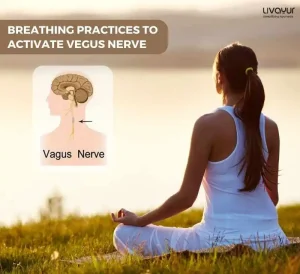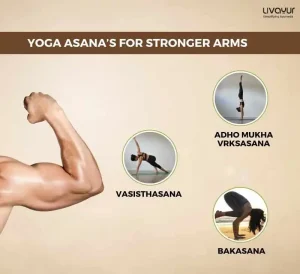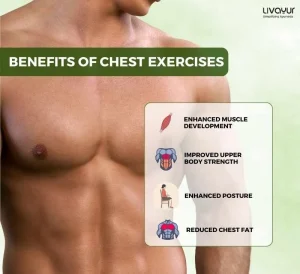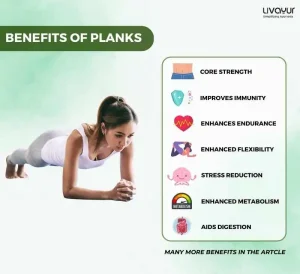
Neck pain is a very common ailment affecting millions of people worldwide. Whether it is caused by poor posture, working long hours on the computer, muscle strain due to sleeping in an awkward position, exposure to cold drafts, or stress, neck pain can significantly impact our daily lives. [1] While seeking medical advice is important for chronic or severe neck pain, incorporating specific neck exercises into your routine can help alleviate discomfort and improve neck mobility. In this article, we will learn about the 12 most effective exercises for neck pain. These neck exercises are designed to strengthen and stretch the muscles in the neck, promoting better posture and reducing pain.
12 Most Effective Exercises for Neck Pain

- Neck Flexion
Neck flexion targets smartphone users with neck pain and can help relieve tension and stiffness. [2] Perform the action of bending the neck while applying pressure with your hand on the forehead. [3] It is also recommended that individuals who use smartphones should consider maintaining neck flexion angles ranging from 0 to 15 degrees. This specific range of neck flexion angles has been found to be associated with decreased activity in the CES muscles. Doing so can minimize neck muscle activity and reduce the likelihood of developing neck disorders related to smartphone use. [2]
- Neck Extension
Neck extension exercises are also known as cervical exercises for neck pain. They are effective for strengthening the muscles, especially in students who are seated in school and often neglect to pay attention to their posture. Proper posture involves aligning the ears with the shoulders and retracting the shoulder blades. However, tilting the head forward or backward puts increased pressure on the cervical spine and can result in poor posture. [4]
- Rolling exercise
The rolling neck exercises are executed in both supine-to-prone and prone-to-supine positions. The goal is to roll sideways with minimal reliance on the lower body, utilizing the rotational force of the neck and arm. To minimize lower body involvement, any engagement or active movements originating from the lower body are identified and corrected during the exercise. The emphasis is on torsion of the body through rotational movements of the upper body, where you need to fully perceive the transfer of force from the neck movement to the body. The session lasts for a total of 10 minutes, with 5 minutes dedicated to each side, including rest periods. [8]
- Sternocleidomastoid muscle stretch
In these neck stretching exercises, you need to rotate your head towards the direction behind your shoulder and raise your head towards the ceiling. Simultaneously, the opposite hand is to be positioned on the forehead and used to gently pull in the direction that elongated the muscle. Each set of stretches for both the left and right muscles is to last for 30 seconds, followed by a 30-second rest period between each set. This stretching sequence is to be then repeated for approximately 10 minutes. [8]
- Neck stabilization exercise
For these neck pain relief exercises assume a supine position with both knees bent, and use a pressure biofeedback device to position under the neck with a pressure set at 20 mmHg. The pressure needs to be then incrementally raised by 2 mmHg at a time, gradually increasing from 20 mmHg to 30 mmHg. For each 2 mmHg increment, the pressure is to be sustained for 10 seconds. The application of the pressure biofeedback equipment should be continued for approximately 10 minutes, including a 30-second rest period between each set. [8]
- Head Rotation
Head rotation neck exercises help stretch and strengthen the muscles on the sides of the neck. Assume either an upright head or head-forward position and proceed to rotate your heads from side to side. Repeat this exercise for neck and shoulder pain but in the opposite position. [9]
- Shoulder Rolls
Shoulder rolls are not only beneficial for the shoulders but also for relieving tension in the neck and upper back and are easy neck exercises at home. Sit or stand and slowly roll your shoulders forward and then backward in a circular motion, making full rotations. [11] These neck pain relief exercises help improve and reduce muscle tightness in the neck area induced due to the downward inclination of the neck and the excessive forward bending when using mobile devices. [12]
- Neck Isometrics
Isometric neck exercises are neck exercises that can strengthen the neck muscles and alleviate neck pain, disability, and improvement of neck muscle power. Sit or stand in an upright manner with your spine straight and use a theraband. For neck flexion, the theraband is to be held directly forwards, while for neck extension, it is to be held backward. To target oblique movements, the theraband needs to be angled towards the right and left. For neck-side flexion and rotation, the band should be crossed over. These neck pain relief exercises are to be repeated approximately 5-10 times, with a hold time of 6 seconds, using a theraband resistance of 1.1 kilograms at 75% elongation. [10]
- Levator Scapulae Stretch
The levator scapulae stretch specifically targets the muscles at the lower back and neck, as well as chronic musculoskeletal pain in the elderly. To stretch the levator scapulae muscle in these neck pain exercises, one approach involves placing one hand on the opposite side of the head and gently pulling the chin towards the armpit. Simultaneously, the opposite arm is raised along the wall, allowing the shoulder blade to rotate upward and maximize the elongation of the muscle. [8]
- Upper Trapezius Stretch
The upper trapezius stretch helps deal with subacromial pain syndrome (SAPS). The condition is marked by a reduction in scapular upward rotation and an increase in scapular internal rotation and anterior tilt. These neck pain exercises pertain to the three-dimensional (3D) movement of the scapula relative to the thorax during shoulder exercises. [7] By utilizing a single hand to exert a gentle force on the side of the head in the opposite direction, while the opposite arm is extended downwards, the individual is able to perceive the elongation and stretching of the targeted muscle. [8]
- Scapular Clocks
Scapular squeezes are effective for repetitive overuse injuries in sports and low back pain. These neck pain exercises use both the contract-relax (CR) stretching technique using dynamometry and the modified stretching technique known as stretch-return-contract (SRC) demonstrated comparable improvements in dorsiflexion range of motion (ROM). [6]
- Pectoral Stretch
In the initial stretching neck exercises for the anterior chest muscles, you have to lie on a foam roll with a diameter of 5 inches. The partner then reaches in front of the participant’s arms and behind their scapulae, interlacing their fingers together. The partner applies a diagonal pulling force, upward and backward from the participant’s trunk, until instructed to hold the stretch. The stretch needs to be maintained for a duration of 30 seconds and repeated twice during each training session. [5]
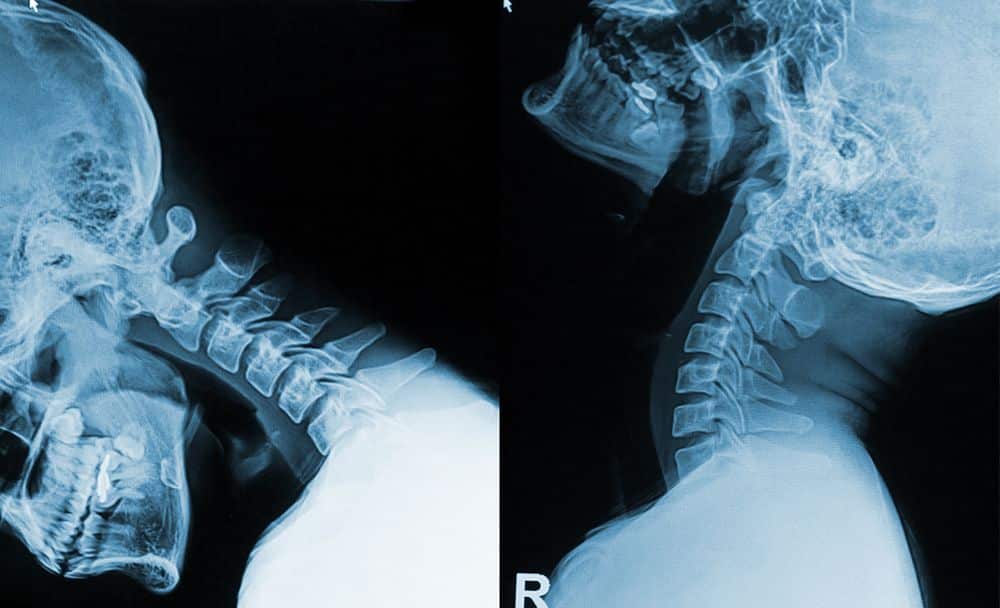
FAQs
What are some of the best lifestyle adaptations for neck pain?
Some of the best lifestyle adaptations for neck pain include:
• Ensure proper posture while sleeping or sitting.
• Gently apply warm sesame or ksheerabala oil on your neck, massaging it with light pressure. Avoid vigorous rubbing, as it may worsen the pain. Massage in circular motions, moving vertically from the top to bottom.
• Make dietary adjustments such as incorporating milk, ghee, and leafy vegetables to pacify Vata, which is considered the culprit behind the pain in Ayurveda.
• Practice yoga poses that involve neck movements, such as bhujangasana, matsyasana, ardha matsyendrasana, and setu bandhasana, as they help alleviate the pain. Apart from these great stiff neck exercises, meditation and pranayama can contribute to the overall benefits.
What are the causes of neck pain?
Causes of neck pain and discomfort include muscle strain, whiplash, herniated discs, arthritis, pinched nerves, injury or trauma, poor posture, and certain medical conditions. You need to perform neck strengthening exercises to get rid of these symptoms.
What are the symptoms of neck pain?
Symptoms of neck pain may include stiffness, limited range of motion, muscle tightness or spasms, headaches, radiating pain to the shoulders or arms, numbness or tingling in the hands, dizziness, difficulty in swallowing, and in severe cases, weakness or loss of coordination in the arms or hands.
Conclusion
Incorporating neck exercises into your daily routine can be highly beneficial for relieving neck pain and improving mobility. The 12 exercises discussed in this article target different muscle groups in the neck and upper back, promoting strength, flexibility, and better posture. Remember to start the exercises very slowly and gradually try increasing the intensity of the exercises as your neck becomes more accustomed to the movements. With consistency and proper form, these exercises can be powerful tools in your journey toward a pain-free and healthy neck.
Disclaimer:
This article is written from a health and wellness perspective only and is not a piece of medical advice. Kindly seek the help of a certified medical practitioner before initiating any treatment.
References:
- Neck pain: Overview
- Effect of Neck Flexion Angles on Neck Muscle Activity among Smartphone Users With and Without Neck Pain
- Painless Neck Flexion Weakness
- Neck extension; (b) normal; (c) neck flexion
- Stretching the pectoralis major
- Scapular clock emphasizing scapular retraction
- upper trapezius stretch, (B) pectoralis minor stretch
- Immediate effects of neuromuscular control exercise on neck pain, range of motion, and proprioception in persons with neck pain
- Immediate effects of neuromuscular control exercise on neck pain, range of motion, and proprioception in persons with neck pain
- Isometric Neck Exercises versus Dynamic Neck Exercises in Chronic Neck Pain
- Maximal shoulder roll and hip roll angles
- Shoulder roll exercise














